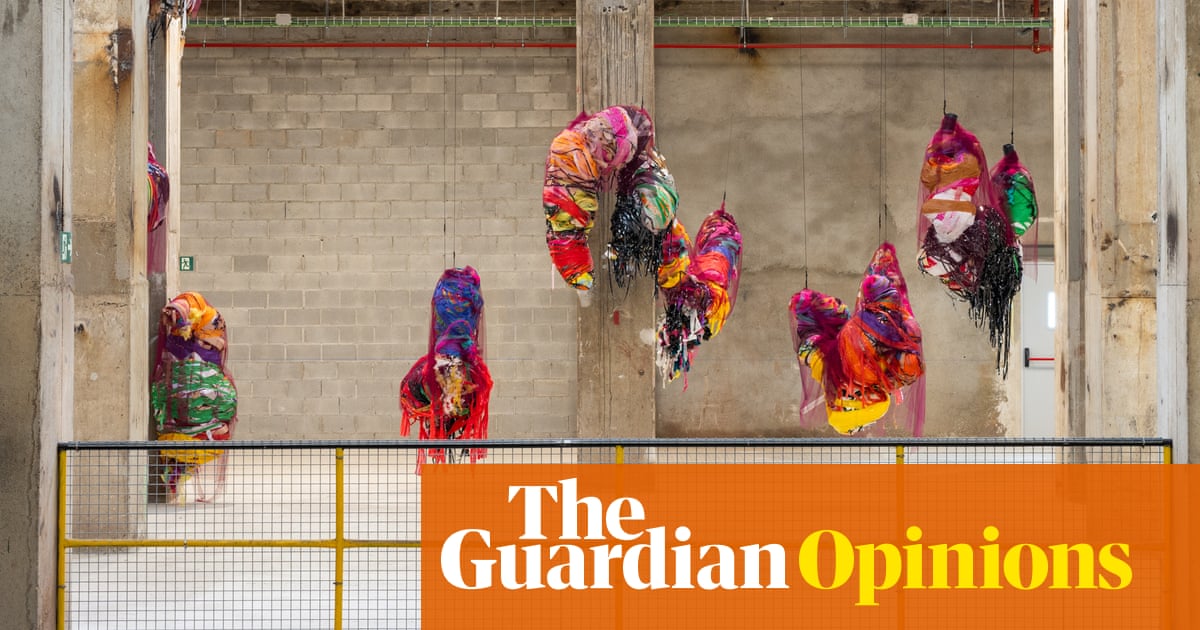Remember when controversy was fun? If not, that’s because you’re too young. But back in the 1990s, my child, Britain got itself in hilarious knots about conceptual art, the readymade and whether a pickled shark or elephant dung can be art, with the Turner prize as battleground. It was a culture war but with laughs, because no one’s identity was at stake and it wasn’t likeBrian Sewellwas going to become prime minister and have Rachel Whiteread jailed.
It is by embracing the earnestness of today’s high-stakes culture wars that theTurner prizehas lost its edge, the art getting more careful as the ideologies loom larger. This year’s shortlist is the soppiest yet. Two of the artists nominated are painters. Painters, I ask you! This makes some sense of the shortlist announcement taking place on JMW Turner’s 250th birthday. But as painters go, do Mohammed Sami and Zadie Xa (who also creates bland installations) compare with the boldness of Mr Turner? Neither is pushing back the boundaries of what a painting might be, or redefining this art for the 21st century in scale, freedom, audacity.
I honestly don’t know why Xa has been shortlisted. She’s one of those artists whose mildly impressive but pointless work you see at every art fair and Biennial. Her figurative fantasy paintings framed by rambling, decorative installations mix up the myths of Vancouver and Korea, but the lack of rawness or shock or surprise is stultifying.
Sami is in another league, and the quality artist on the shortlist. His large landscape paintings meditate on the horrors of war and agonies of enforced migration with a disconcerting poetry rooted in an impressionistic mistiness. You look at a blue sky over water, or trees above a rocky cliff, tenderly painted with whiffs of Monet and Cézanne, but then notice a refugee camp through the woods, or starbursts of ordnance in the Iraq sky.
Surely he’s a shoo-in to get the Turner prize. He is not only the best artist on this list but a real international talent whose seriousness and subtlety are obvious. So why am I not more thrilled? I suppose because this is good for you. Sami is important but he’s not shocking. His art embraces skill instead of setting out to scandalise or create a new language. I would like it more if it had no moral value at all.
So what about the non-painters? Will they provoke us with … balls of coloured paper and wool? That’s what Nnena Kalu makes, hanging her multicoloured tangles of streamers and strands in poetical arrangements. These craftily wrought sculptures won’t scare, or amaze, anyone. Kalu’s work has a familiar appearance, and that’s not just because she’s been doing this stuff for two decades before recently getting recognition. It’s because this kind of post-minimalist, found yet handworked sculpture has dried-out, attenuated roots in art movements that started way back in the 1960s. Nice, academic, dull.
The artist who makes most sense as a Turner candidate, even firing the old flames of raw controversial reality, is Rene Matić, whose photographs portray intimate moments with family and friends – and report on skinhead subculture. Sadly these close, fragmentary images don’t have great emotional pull on a stranger – it’s a bit like looking at someone else’s family snapshots. To make that work takes more flamboyance and poignancy than Matić shows. Rene’s not a laugh. Yet there’s something in their work that you don’t get from the others: a glimpse of life in Britain right now.
I think this goes to the heart of this Turner shortlist’s fragility. It is determinedly globalist, reflecting a jury made up exclusively of curators who have shortlisted the kind of stuff they see all the time on the international circuit – Xa, for instance, has been shortlisted for work at the Sharjah Biennial, in the United Arab Emirates.
Sign up toArt Weekly
Your weekly art world round-up, sketching out all the biggest stories, scandals and exhibitions
after newsletter promotion
Clearly the jury are striking a blow against Brexity Little Englanders by shortlisting an artist from Vancouver whose art reclaims her Korean heritage – but who meets the rules by being resident in the UK. If Xa was a better artist this would be a more powerful gesture.
But this shortlist’s lack of connection with the realities of contemporary Britain is just another way to dig the ailing Turner prize deeper into irrelevance and empty bourgeois ritual. This year’s exhibition will be in Bradford, far from the liberal elite metropolis this shortlist reeks of. So we’ll go to Bradford, applaud these right-minded artists, approve of art without borders and ignore the rising vote for Reform outside this introspective event.
Obviously there’s good in all these artists but not enough to make the Turner matter again. Only one gives you a glimpse of what’s going on in the streets, as opposed to the Biennials. I hope they win. Speak for England, Rene!
